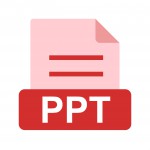Inadequate Data Visualization Leaves Patients Undereducated
Data visualization is becoming more widely used in patient care but there is still work to be done. In this article, The New York based medical illustrator Amanda Montañez–explains why this area merits more investment than it currently receives.
The Crastina theme of October 2015 is data visualization. Join the discussion—leave a comment below!
 Data visualizations for medical patients pose a unique challenge. Although data visualization is often viewed as a fairly straightforward way of presenting facts, data graphics can be hard to decipher, and are often far from impartial.
Data visualizations for medical patients pose a unique challenge. Although data visualization is often viewed as a fairly straightforward way of presenting facts, data graphics can be hard to decipher, and are often far from impartial.
In the context of medical care, an unclear or biased representation of data can be quite harmful. Just imagine a situation where patients base their treatment decisions on visualizations of risk-related information. For those charged with visualizing data for patients, the essential considerations depend heavily on the intended audience, and are further complicated by the fact that patients are almost never a homogeneous group.
I have faced these challenges firsthand in my work as a medical illustrator. In my ongoing research project, I developed an educational resource for use in midwife-led maternity care. In this context, risk-related information must be approached in a unique, unbiased way. The idea is not to convince women to choose a specific course of action, but rather to inform them.
But statistics can be hard to navigate, especially when compounded by multiple options and associated risk factors. Unfortunately (to paraphrase one midwife I interviewed), once you plant the mental seed of risk—especially if the risk is something serious, like permanent illness or death—most women immediately picture their babies suffering that outcome. The actual likelihood of the outcome might be miniscule, but the expectant mothers’ distress is no less severe. The resulting anxiety can be deleterious to decision-making.
This phenomenon can be applied throughout the health care field. Data can be an important tool for patients, but it’s often complex, and sometimes scary. Viewers must receive a complete picture of the data, including all of the risks, but there is also a need to ease, or at least not worsen, the viewer’s emotional response to that information. The visualization must be comprehensive and unbiased, yet viewer-friendly and engaging.
While I can’t offer a clear solution to these problems, a few things are clear. First, data visualization is vastly underused in patient education. For the same reason that scientists plot their quantitative results rather than just viewing them on a table, it seems self-evident that visualizing data is better than simply listing percentages. And it can be helpful to visualize very small but anxiety-inducing risks, in order to show how miniscule they are compared to the odds of a positive outcome.
In addition, some visualization styles are better than others when it comes to communicating risk to patients with low numeracy. Icon arrays are particularly effective, and are less likely to increase anxiety than other graphical techniques.
While data visualization is becoming more widely used in patient care, there is still work to be done. For example, I find that impartiality is sometimes neglected in favor of attention-grabbing visual elements. Also, formal considerations such as color interactions and composition must be given ample attention, lest distracting graphical features get in the way of comprehension. Data visualizers must also find ways to communicate less clear-cut information, such as ranges of data, and variations based on risk factors.
On the whole, data visualization for patient education is an area that merits more investment than it currently receives. Considering the plentiful talent and technology associated with data visualization more generally, it seems that the challenges involved in patient education would not be insurmountable, if only given the proper attention.
Amanda Montañez is Assistant Graphics Editor at Scientific American. She is based in New York City and also does freelance medical and scientific illustration. Twitter: @unamandita
This Crastina Column is based on a blog post from Scientific American’s Blogs, July 2015.





Trackbacks & Pingbacks
[…] https://crastina.se/inadequate-data-visualization-leaves-patients-undereducated/ […]
Leave a Reply
Want to join the discussion?Feel free to contribute!